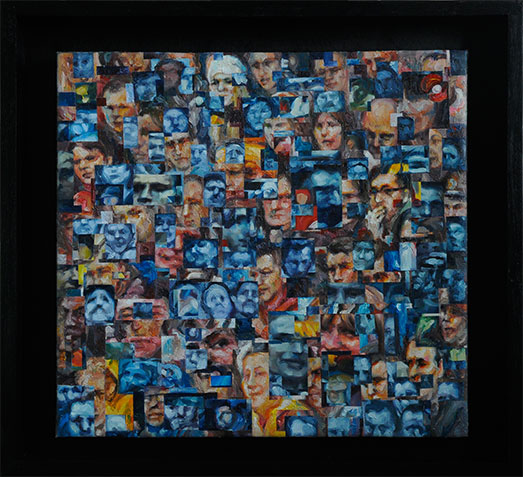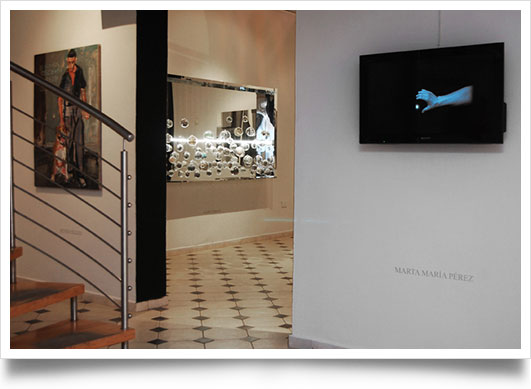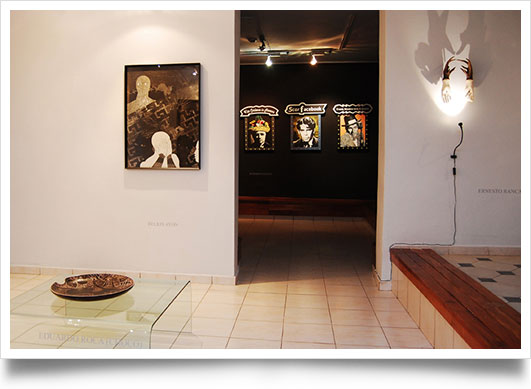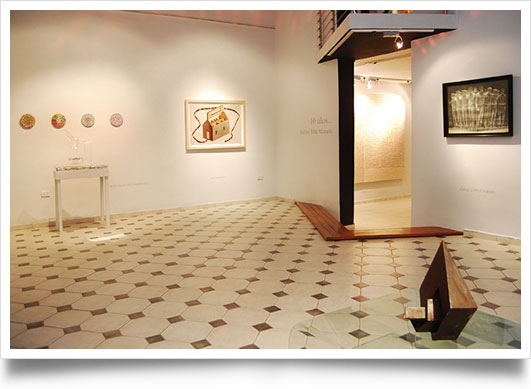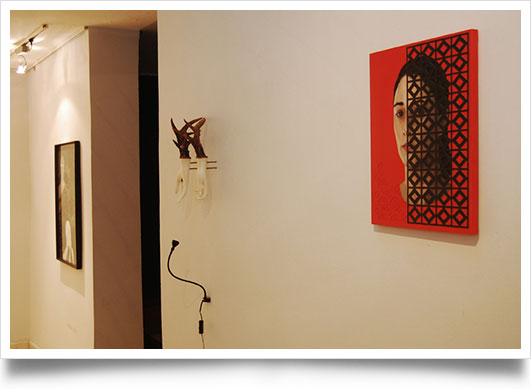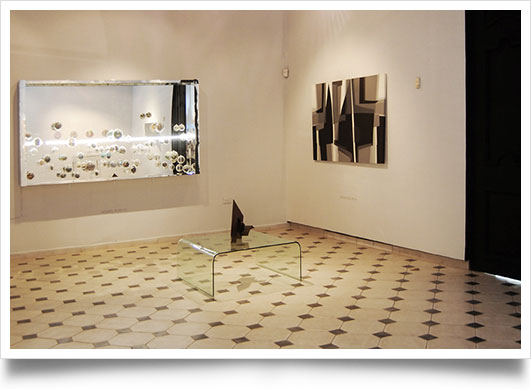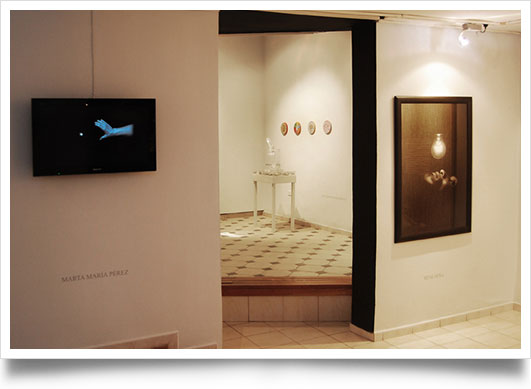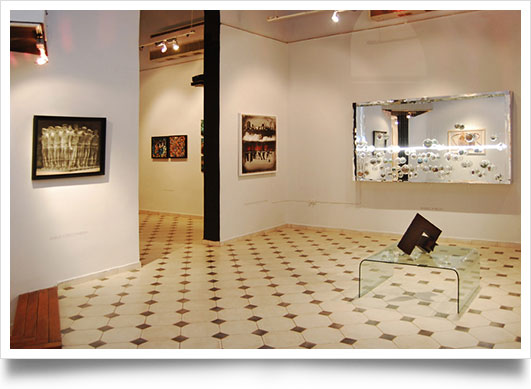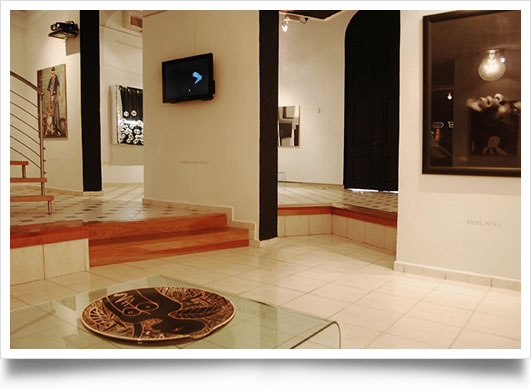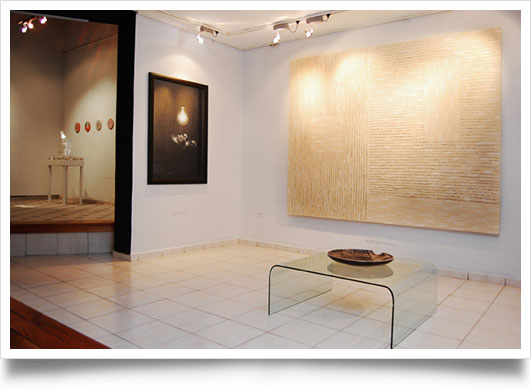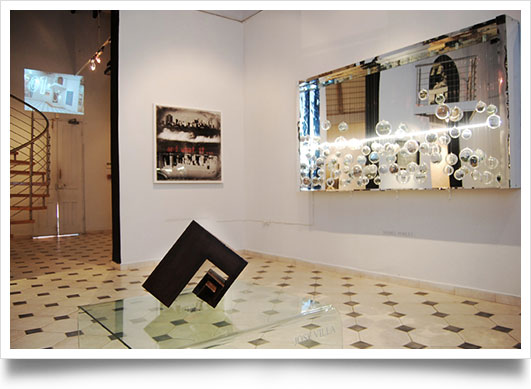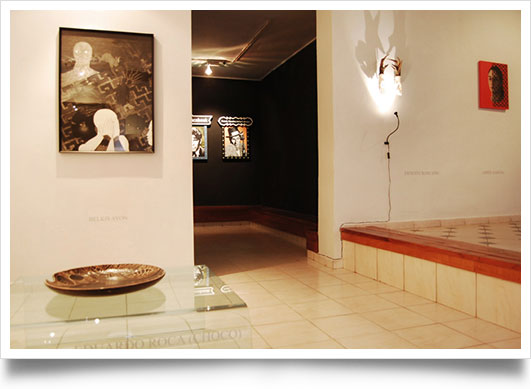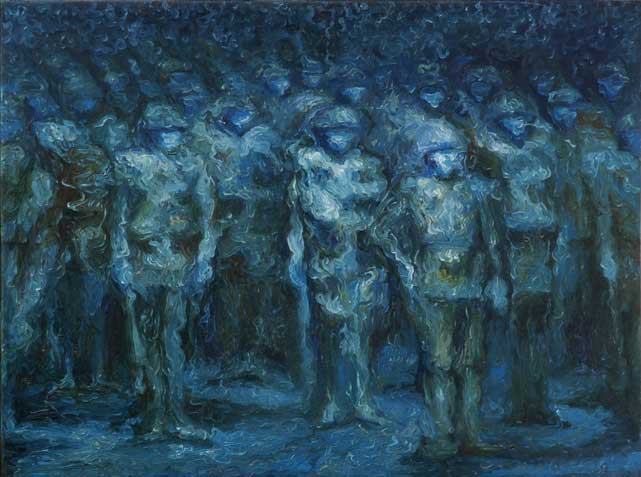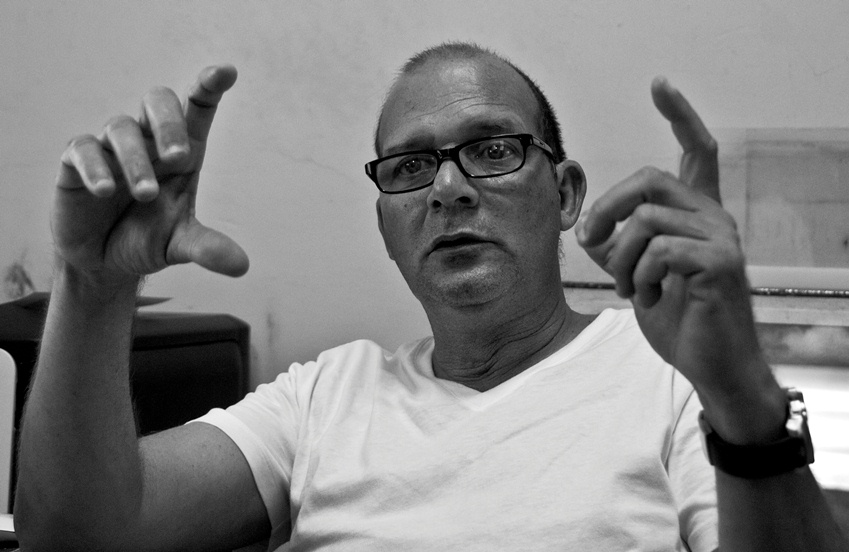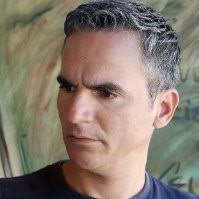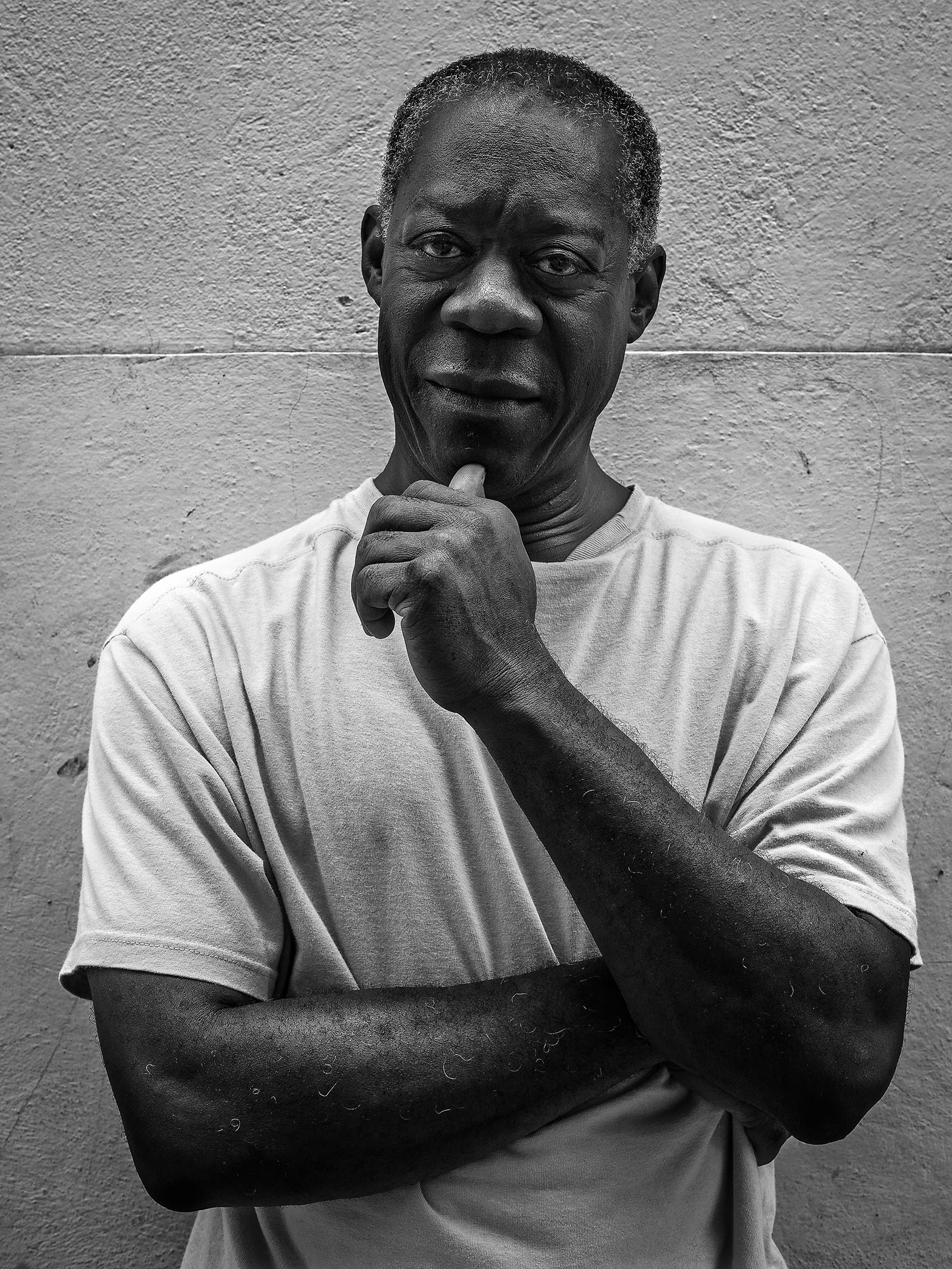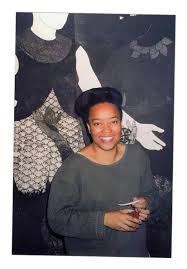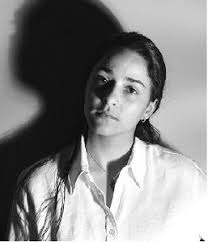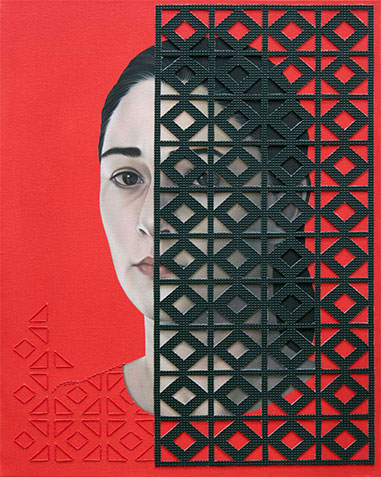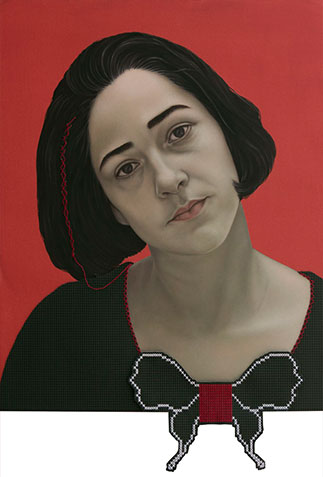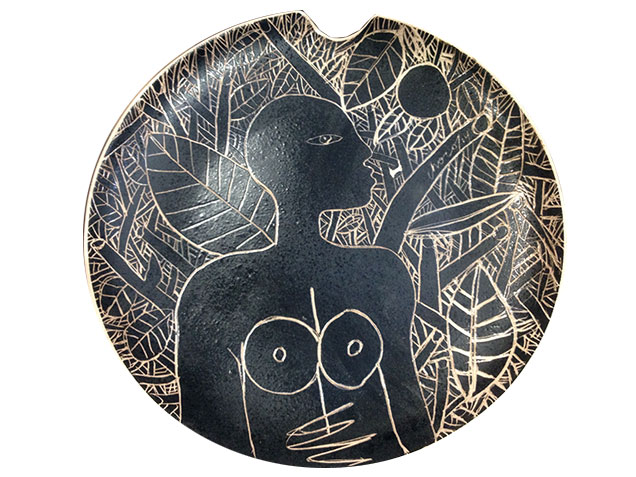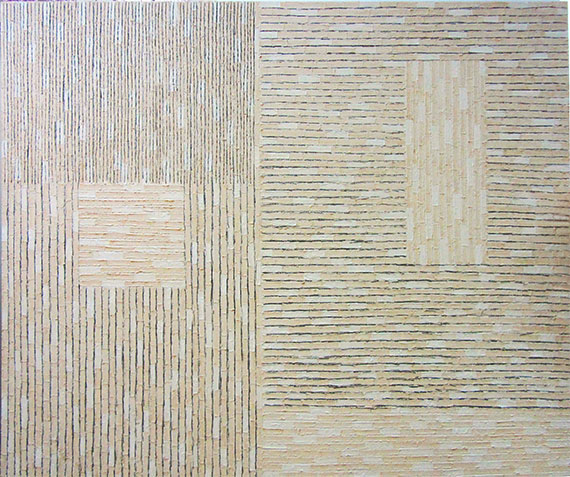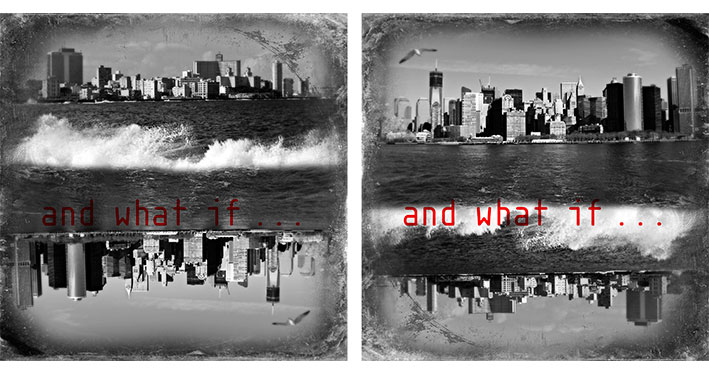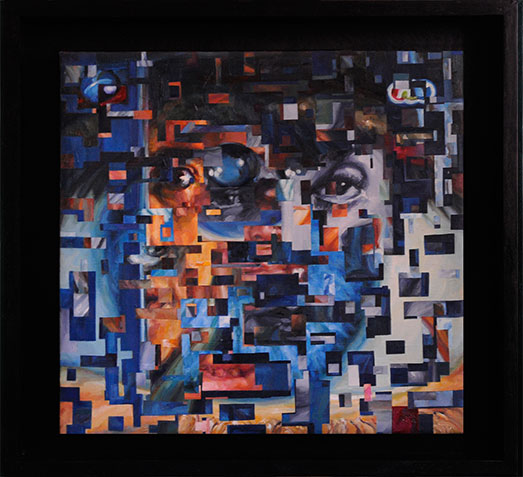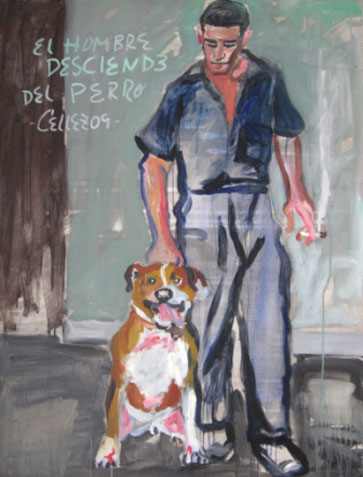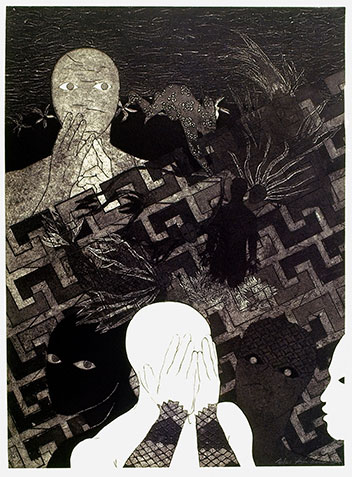10 years …
Inventory and Representation
Eyder La O Toledano
Havana, Cuba
A decade ago, the apparent modesty of a large, eclectic Vedado house made a stand against being a mournful, silent and forsaken place; suddenly, everything began to change in order to be inhabited by art. Its space gradually received a form; the inner structure acquired excellent conditions on the basis of a dynamic design that aimed at adapting to all forms of the visual arts and the different mounting strategies. The group showcase entitled 10, a plural concert that brings together a group of authors living in the Island and abroad opens the gallery doors for the celebration.
Villa Manuela -such is the name give to it- is currently one of the most important galleries in La Habana and in the country. For any creator, whether established, novel or unknown, exhibiting in it is a reliable testimony that his/her work is on the right track, but, above all, a jump into recognition and a form of validating his/her artistic route.
Specialized in contemporary Cuban art, its existence was due in the beginning to the imperative need of the visual arts creators who were members of the Association of Writers and Artists of Cuba (UNEAC, the Spanish acronym) to have a space of their own to exhibit their works and represent them.
Up to this day, 198 artists of different trends, genres, styles and geographical coordinates have exhibited in the gallery, which makes Villa Manuela not only one of the most important exhibition halls for visual arts but also one of the most active and visited by artists and publics because of the possibility of exhibiting showcases that support provocative, suggestive or non-conformist discourses, but above all, with proven quality thanks to an intelligent and correct curatorial work that goes beyond the mere mounting of pieces and speaks in favor of the qualification of the specialist team.
When Everything Started
In one of the halls of the not too large facility, but whose space is well optimized, I invite Antonio Fernández Seoane, critic, curator and first director of Villa Manuela to tell about those first moments and reveal anecdotes that may help us remember how everything started ten years ago.
He confesses that the first showcase resulted from hundreds of discussions among the specialists to define the artist and exhibition that were to inaugurate the gallery. Thus, they presented proposals, but the fear of hurting sensibilities led to a profound search of solutions that opened the door to the best idea: to convoke and bring together the National Prizes in Visual Arts until that year.
“We exhibited works starting by Raúl Martínez, first Prize in Visual Arts, 1994, up to Osneldo García, who at the time had been the last one to obtain it. It was July 1994. It was undoubtedly a good idea that has not been repeated, at least not in Villa Manuela. It was a success, because the works produced a concert of genres, forms, themes and trends that made up the lifeblood and revelation of what was taking place in this art form in the country. I remember we named it Recuento de un premio (Inventory of a Prize).”
“With a group exposition of that magnitude that concentrated so many artists validated and established by the culture and art in the country, it was necessary to fly higher with a personal show. Among the most urgent proposals at that moment was Agustín Bejarano, an artist whose discourse convoked and drew the critics’ attention. The show was called Meditaciones.”
“But since we needed to continue with the National Prizes we agreed upon the importance that each one of them also make a personal exposition, and opened this cycle with Ernesto Fernández. Why he -and points to the creator, who was present there and invites him to share in the dialogue- and not somebody else? Because he is a photographer, and when he was mentioned, the only reference was his work as photojournalist, particularly during the epic of Girón. It was a form of gradually evidencing the ecumenical work as to forms, styles and genres that Villa Manuela was starting to advocate.”
Ernesto Fernández, Nacional Prize in Visual Arts 2011, finds no excuses and joins us, not without some sharp remarks that reveal his humbleness: “I am not a talkative person, all I know about is photography, that’s where I belong; let him go into the details. The showcase was entitled Con la magia de tu arte, dedicated to Alicia Alonso in three different moments. One of the series is about a rehearsal of Ballet Nacional de Cuba when it was located on 11th Street. Can you imagine Loipa Araújo was still a teenager! The other two series I called Alicia Carmen and Alicia Giselle”.
Throughout this decade, 95 expositions have been made at Villa Manuela per year, including both personal and group expositions of artists who live outside the capital and abroad. The intention has been to fulfill one of the purposes of the institution: to promote and represent the creators in the UNEAC, irrespective of the fact that at present its objective has been widened and it has opened to younger artists, even to newly graduates from academies like San Alejandro and from the Higher Institute of Art (ISA).
Elvis Cellez González, from Pinar del Río, is the only artist from a province who appears in 10, the group exposition of the anniversary: “To insert myself from my territory into the Havana exhibition circuit, specifically into Villa Manuela, has undoubtedly been a praise to my creation and to me personally. I first participated in an exhibition dedicated to painters from Pinar del Río, 2 + 2 no es paisaje, where we tried to change the concept that in Pinar del Río we only broach that theme. That opportunity opened doors for me to present a personal showcase in this same place.”
The Privilege of Being Villa Manuela
When one talks about visual arts, the voice of Lesbia Vent Dumois, president of the Visual Arts Association at the UNEAC deserves full attention because of her mastery and knowledge of the development of that art form in Cuba, and her experience in handling the different zones of contemporary art in the country.
A dialogue with her is, undoubtedly, a moment of entertaining conversation, since she knows in detail everything that goes on in Cuban visual arts, but particularly emphasizes on what happens in Villa Manuela, an institution she headed for several years.
“The gallery is now ten years old, and it seems like yesterday when we were inaugurating it. More than a space requested for many years by the members of the Visual Arts Association of the UNEAC, I appreciated at that time the beautiful and functional complex conceived by architect José Antonio Choy and the intelligent exhibition that proudly showed the first national prizes granted by the National Council for Visual Arts. This link with the institutions and with the most diverse expressions and artists of the Cuban contemporary plastic arts has characterized this space that creators, theorists and critics have regarded as their own, having taken part in the cultural debates, catalogue and book presentations, conferences and discussions of graduation theses held there and making use of a workshop that offers services for the presentation of the works and an incipient but promising art market.”
Her slow voice and the expressions of her face when speaking reveal her attachment to the house-gallery and her commitment with the rising development of this art form in the Island: “Having steady specialists and a sense of belonging, as well as the active participation of the Plastic Arts Association in its programming ensures that we will be able to fulfill for many years the expectations of the new generations.”
That same point of view is expressed by David Mateo, persistent critic, tenacious curator, artist who, from the standpoint of an always learned spectator has been among those who have most contributed to establish Villa Manuela as a national reference gallery.
In 2009 and 2010 Mateo was director of the gallery, which, he assures, has been the best place where he has performed curatorial work.
“At Villa Manuela there has always been a concern for the defense of a concept of curatorship that consists of looking at the processes and production of the exhibitions. Since it opened its doors it has known how to manage the mounting and the promotional work: edition of catalogues and full-color brochures, television spots, but also a place for theoretical dissertation at moments when those practices had scarce coverage within the official spaces.”
The thesis that the institution has been conceived to promote contemporary Cuban art must not be an obstacle to project it beyond the national frontiers, according to Mateo.
” should arrive any moment. Today, Villa Manuela is represented in important fairs, events and biennials mainly in the Latin American region, and does it in search of international visibility and positioning, also to attract in due time artists who may irrupt into our salons.”
Artworks
